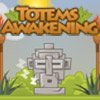+f-lt>J v"L/6&P)m%v2BkVlQ|c`/sB^c@f k`O ;z=Bcv,q}G$,2w+a!v[BMngaaKrti7w60!eY0`b_)K X3ws][}Pa,X3$ORa*Wx_RR7Uor{|_z>c cCn4.&P~~;b&csp2q7qs5m7S?n|M^7%|g:K,i-m]Hwkzt 0 aDp
gathering or collecting data and tools to solve the problem. In essence, teachers want their students to be able to use what they have learned in school and use it appropriately in the real world. The in-depth look at Perennialism, which will be provided in this chapter, will begin with an overview of the key characteristics of Perennialism. Teacher-centered philosophies are the ones you are probably most familiar with. For Perennialists, the aim of education is to ensure that students acquire underst and ings about. This philosophy aims to instill students with the essentials of academic knowledge and character development. In progressivist classrooms, students have opportunities to follow their interests and have shared authority in planning and decision making with teachers. Student-centered learning is just what is says. Research indicates that teachers personal and professional characteristics are related to how they teach (Smerdon and Berkam, 1999).
Reflection on My Personal Philosophy of Education in Comparison with My According to Doll (1992: 28), philosophy has the multifaceted effect of helping us to: Thus, philosophy is a crucial determinant of curriculum trends and the curriculum development process by helping clarify our thought process. . Essentialism Formulated in part as a response to progressivism, this philosophical orientation holds that a core of common knowledge about the real world should be transmitted to students in a systematic, disciplined way. In this sense these subjects are essential. Essentialist curricula focuses on reading, writing, computing clearly and logically about objective facts about the outside real world. Why. Learn more about how Pressbooks supports open publishing practices. The other four includes progressivism, existentialism, Reconstructionism and critical pedagogy respectively. A mix of more than two philosophies is called Eclecticism. We learn by doing. Following are a few: Based on this philosophy, there should be a core curriculum for every learner. Essentialist educators focus on transmitting a series of progressively difficult topics and promotion of students to the next level or grade. They believe that each subject has value in and of itself. The following video links philosophies to curricular designs and design considerations: Based on the major philosophies so far discussed, certain educational philosophies were developed by various scholars.
The aim purpose of essentialism and progressivism Free Essays Legal. Lay (secular) philosophers that have influenced perennialism include: Robert M. Hutchins, Mortimer Adler, and Allan Bloom. What do Perrenialists believe are the primary goals of schooling? Want to create or adapt books like this? EDCI 710: Social foundations of K-12 education, Section II: Deculturalization The History You May Not Know, Section III: The importance of student voices, Section I: characteristics of Perennialism, Characteristics of Social Reconstructionism, Principle I:Ethical Conduct toward Students, Principle II: Ethical Conduct toward Practices and Performance, Principle III: Ethical Conduct toward Professional Colleagues &
One example of this would be if a math teacher lets his or her students work in groups to solve different problems or let students create their own test. These philosophies focus on what the teacher wants his or her students to learn. H\j >w%PrNReby6l*s)do@q;@.
Reconstructivism, Essentialism and Progressivism Teaching Styles Social reform in response to helping prepare students to make a better world through instilling democratic values.
Foundations and Assessment of Education/Edition 1/Foundations Table of As such, he argued that selecting 100 Great Books and teaching them to students naturally aligned with these permanent studies. Defining Curriculum and the Role of Open Educational Resources, 2.
5.3: Philosophical Perspective of Education - Social Sci LibreTexts 3. Theory 3: Subject matter is merely a medium for teaching intellectual processes, skills, attitudes and appreciations.
dastgz - Blog With that focus, education should be the same for everyone. Many props are used to expand the students abilities and to make them think a little differently. . Be capable of the highest forms of reasoning (Webb, 2010). 2.5: What is the difference between teacher-centered vs. student-centered philosophies? Truth also should be the idea that has been tested, verified, and found effective in solving problems. These educational philosophies focus heavily on WHAT we should teach, the curriculum aspect. Retrieved September 14, 2008, from http://education.com/reference/article/Ref_Teacher_Centered. Kids Dont Know U.S. History: The NAEP Study, Perspectives, and Presuppositions. These educational philosophies focus heavily on WHAT we should teach, the curriculum aspect. Chapter 5: Perennialism. Moving from traditional educational philosophies, let us now examine more modern ones. Reconstructionists hold on to an anthropologicalsociological philosophy that would put schools at the forefront of remaking society. Essentialism that is a traditional philosophy of education, is based on realism and idealism, defends human as a social and cultural existence. At the elementary level, a Perennialist teacher would be focusing on the management and teaching of basic educational skills. TThere are four major educational philosophies Perennialism, essentialism, progressivism, and social recontructionism. He also advocated for the use of the Great Books by arguing that students could learn a lot from the great works of the past. One of the reasons for a more uniform approach to curriculum is the idea of a one-size-fits-all mentality. Use the ILA Responses Group in the Hypothesis annotation tool to respond to the following questions. This teaching-centered philosophy believes in teaching students the accumulated knowledge of our civilization through core courses in the traditional academic disciplines. The students are accountable for what they have learned and the teachers are also. In this chapter, we will explore idealism, realism, pragmatism, existentialism, and educational philosophies which are perennialism, essentialism, progressivism, and reconstructionism. Teacher-centered philosophies focus around essentialism and perennialism.
Perennialism, essentialism, progressivism, deconstructionism - SlideShare The six key philosophies of education that will be explored in this text are: Perennialism, Progressivism, Behaviorism, Essentialism, Social Reconstructionism, and Postmodernism. al. The philosophy presupposes that there are permanent studies and knowledge that is available, particularly from the great books, which should be taught to all students. used in classrooms the world over. According to the Perennialist philosophy, carefully supervised exposure to permanent studies helps to create rational, enlightened, and intellectually stimulated citizens. What additional insights did you gain about the Perennialist philosophy? In order for students to become truly intellectual beings, they needed to be able to master each of these subject areas according to the Perennialist philosophy. Compare and contrast the philosophical beliefs of perennialism, essentialism, progressivism and reconstructionism. Critical pedagogy is the application of critical theory to education. learner-centered teaching and learning methodology. In a perennialist classroom, the teacher will focus on the importance of reading and will often use the underlying reading lessons to make a moral point (Sadker and Zittleman, 2007). Progressivists education seeks to promote democratic schooling as well as social living. When aligned with accuracy and fairness, their inputs should be considered. 2.
Perennialism. Culture in any society incorporates valued traditions. The main implication is an emphasis on knowledge and abilities for personal choice. Educational Philosophies. Social reconstructionism was founded as a response to the atrocities of World War II and the Holocaust to assuage human cruelty. Why or why not? These educational philosophical approaches are currently used in classrooms the world over. Learn more about how Pressbooks supports open publishing practices. Perennialist generally prefer a past orientation, because it tends to be based on historical truth, rather than conjecture about the present and guessing about the future (Gaudelli, 2002). 65 0 obj
<>stream
Information related to the curriculum, instructional methods, the role of the teacher, and role of the learner will also be explored. primary goal of education within this philosophy is to search for and disseminate truth. . Unlike the more abstract ontology and axiology, these four perspectives focus primarily on what should be taught and how it . Similar to Perennialism, Essentialism aims to develop students' intellectual and moral qualities. Reality, therefore, is subjective. Disciplines of curriculum should contain certain elements of culture. St. Johns College in Annapolis, Maryland is a great example of a University that follows a Perennialist philosophy.
The Five Philosophies Of Education - 1235 Words | Cram According to Julie K. Brown, she basically says that student-centered instruction is when the planning, teaching, and assessment revolve around the needs and abilities of the students (2008). Regardless of variations in developmental levels, all children are exposed to the same content in the same time period and the teachers role is to facilitate growth by utilizing the interests and unique needs of students as a guide for meaningful instruction (Teacher Vision).
Seward Public Schools Superintendent,
Articles C
">
Rating: 4.0/5










